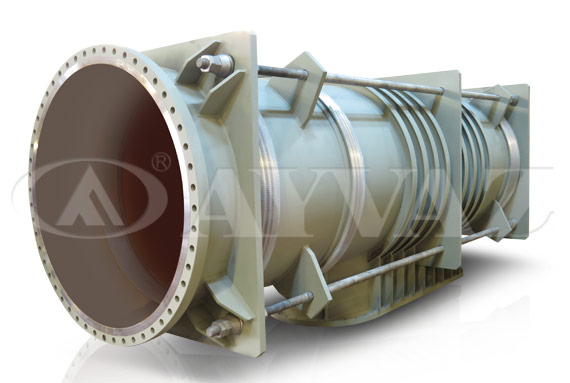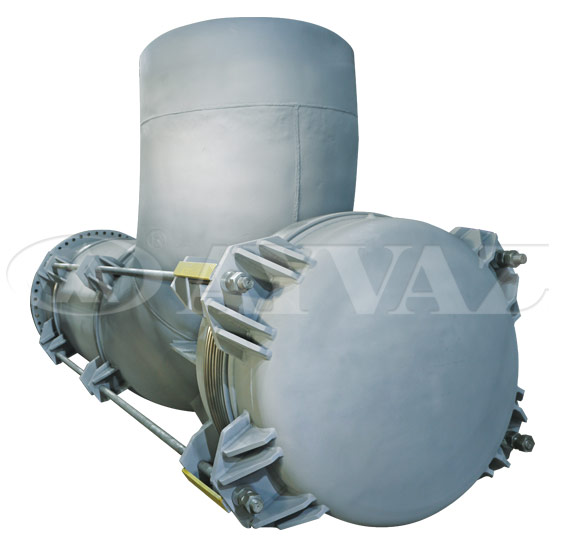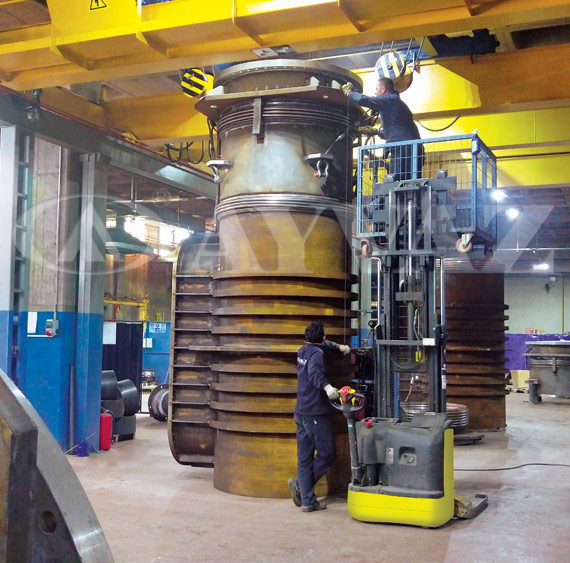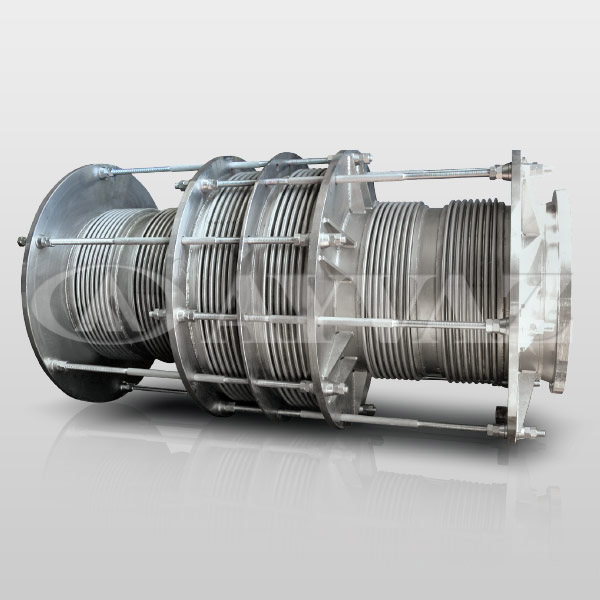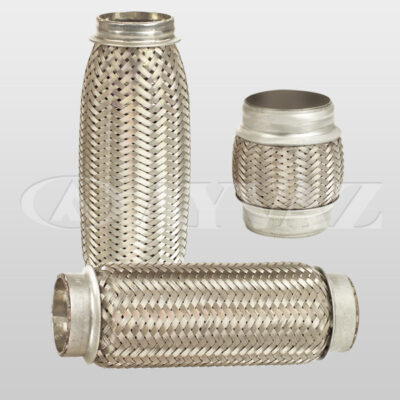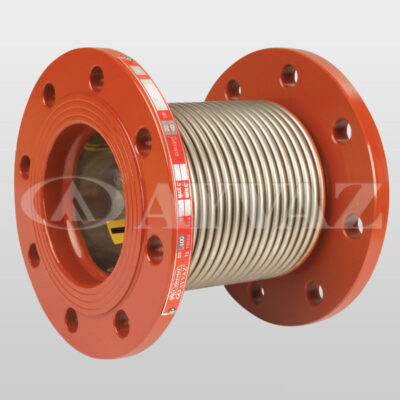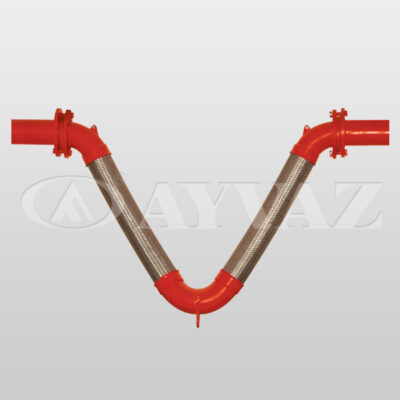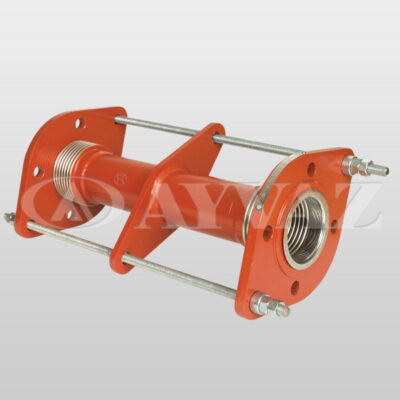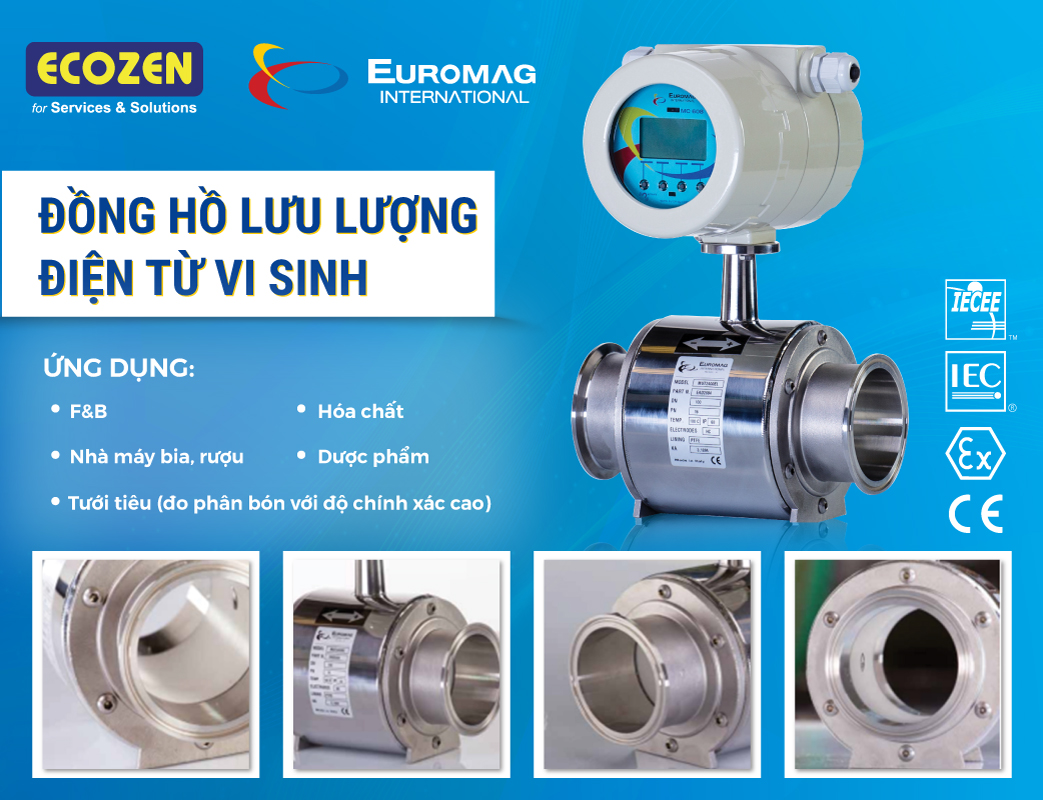A pressure balanced expansion joint is used to accommodate and counteract the bellows pressure thrust. An additional bellows joins to the construction to incorporate into the unit and is subject to the line pressure to generate a force equal and opposite to that on the main bellows. Connecting all these bellows together neutralizes the pressure load on the construction.
Pressure balanced expansion joints are generally installed at changes of direction in piping (elbow type) but in-line types are also available. Use of pressure balanced expansion joints helps the piping designers not to create main anchors to accommodate combined movements at the direction changing points.
Features:
Bellows design for various type fluids and steam
High pressure & full vacuum
Combined axial, lateral and angular movements
Dimension: DN 15-4000
Design pressure: Up to 150 bar (depending on the diameter and working conditions)
Design Temperature: Up to 400 °C (depending on the material type)
Lifting capacity: Up to 16 ton
Application Areas:
Geothermal Power Plants
Fossil firing thermal plants
Gas turbines
Hydroelectric power plants
Nuclear Power Plants
Construction:
Expansion Joints are the parts of piping system of pressurized equipment. In this respect construction of the expansion joints are designed and produced according to European pressurized equipment directive (PED 2014/68/EU) as well as American National Standard for piping process ASME B 31.3.
All components of the expansion joints like, pipes, caps, flanges, tie rods etc… are checked by piping stress analyzing software thus enable us to select material type & thickness according to permissible stress values.
NDT Controls:
Non-destructive testing for welding controls are completed in house by the TÜV accredited third party inspectors. Following controls and standards are applicable.
100%PT acc.to EN3452-1,EN23277
100% MT acc.to EN17638,
100%VT for Fillet welds
100%RT acc.to EN ISO 10675-1, EN I7636
100%UT acc. to EN 17640, EN 11666
